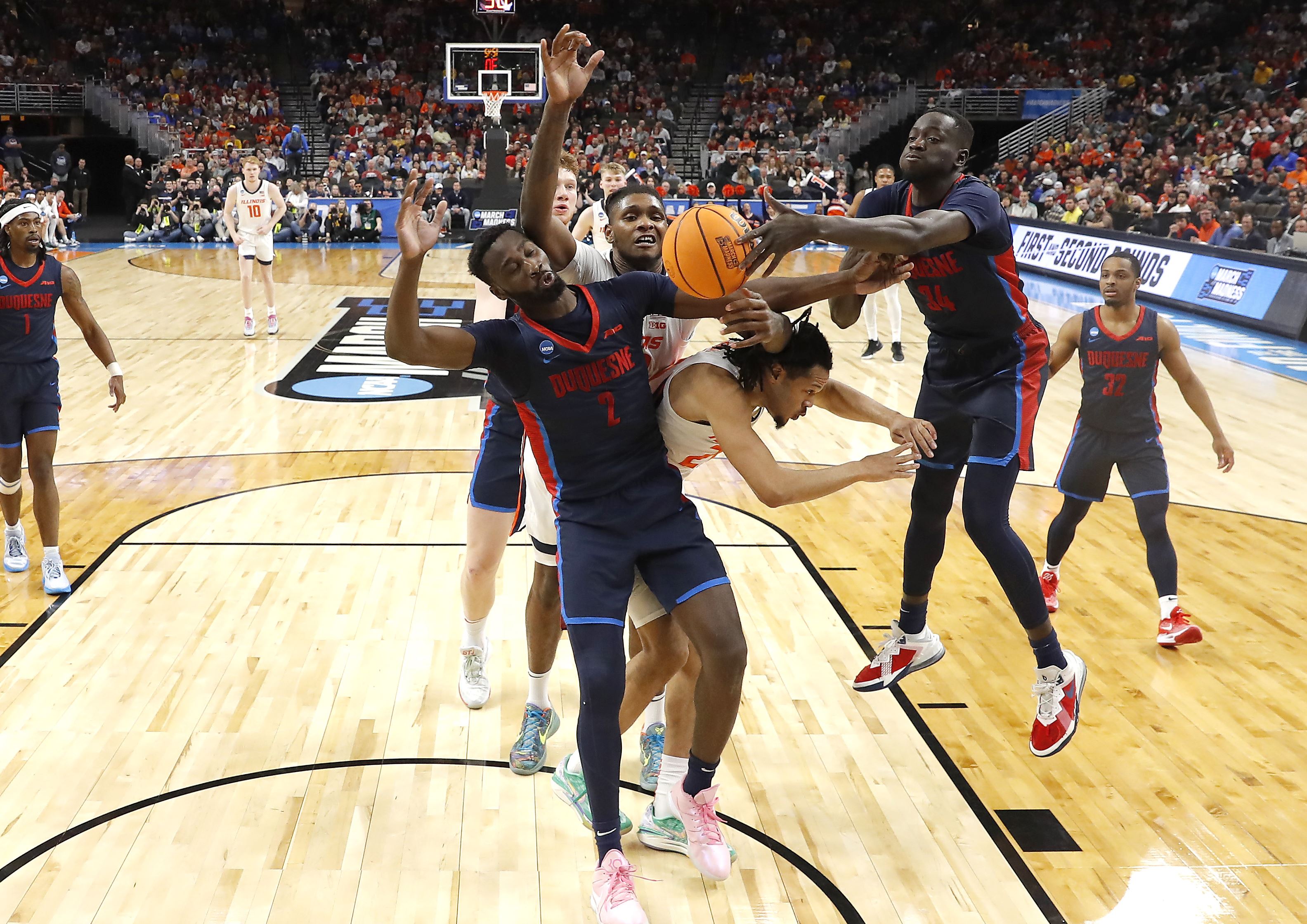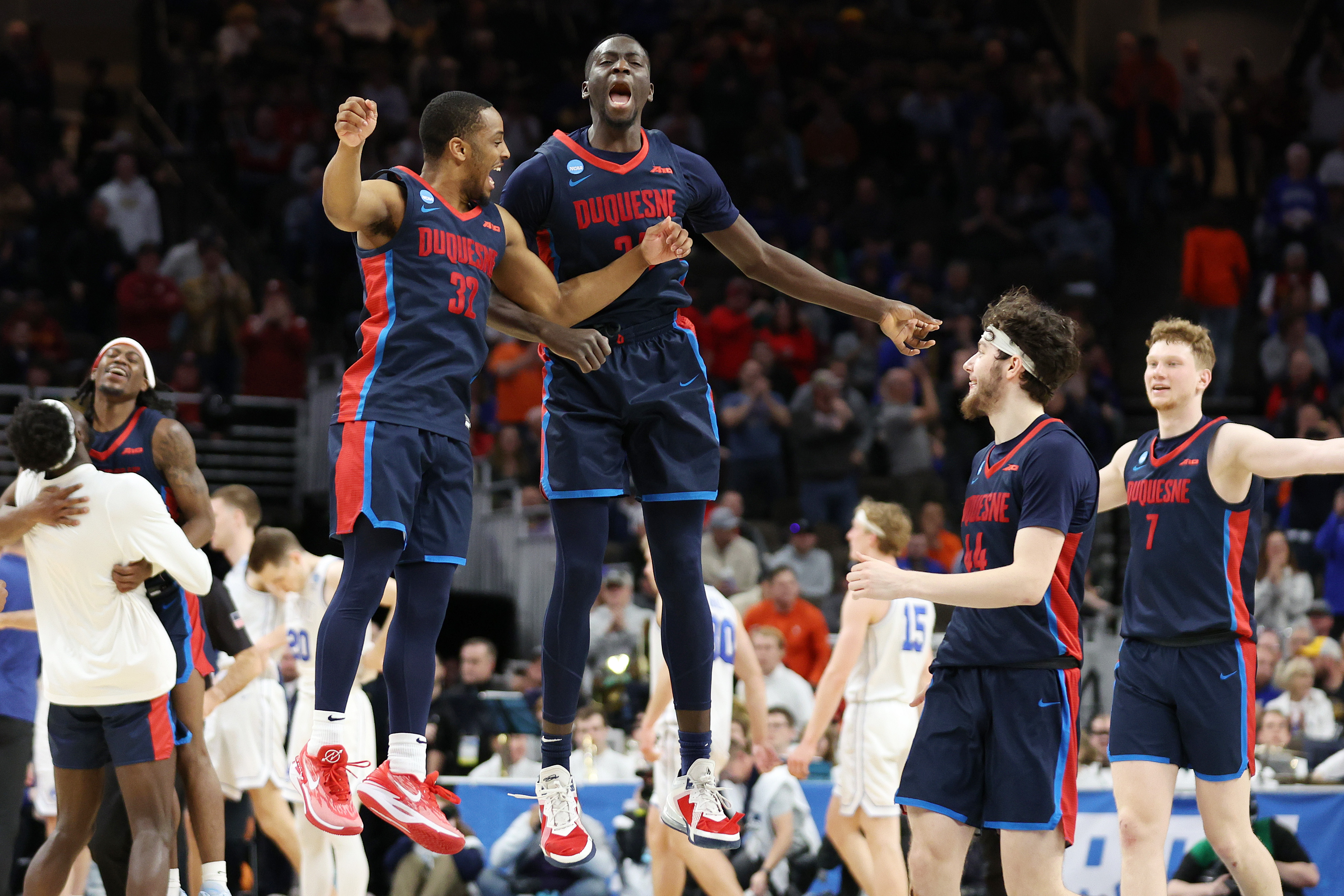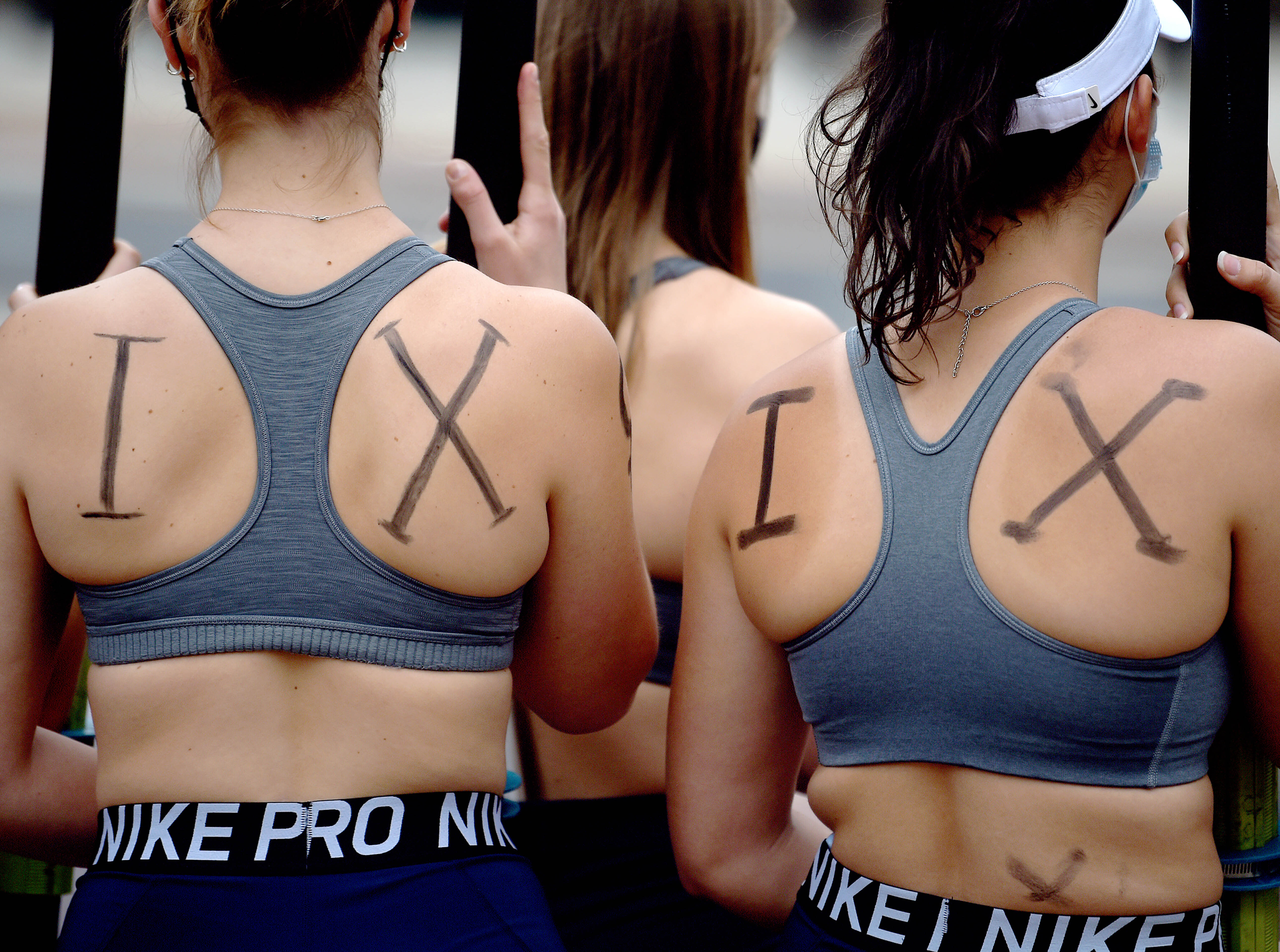
How will NCAA revenue sharing work for Pittsburgh schools? The answer is complex
College athletes scored a major victory on Thursday, when the NCAA announced it had worked out a settlement for three pending federal antitrust cases that will pay the players going forward. Current athletes aren’t the only ones who will benefit, as players whose time on campus dating back to 2016 will be in line for checks from the $2.7 billion to be paid in damages.
It’s not all good news, though, as there’s speculation that the settlement could have implications for schools at all levels. Smaller schools like Duquesne and Robert Morris may have to make budget cuts — including potential program cuts — to cover their yearly portion of the damages. Power Five conferences like Pitt will have to drum up the money to pay the revenue share to athletes whether their teams are successful are not.
There are already complaints coming from Power Five athletes who play Olympic sports and are expecting smaller checks than those paid to football and men’s basketball team members. Plus some observers believe the settlement’s formula means the biggest schools won’t be carrying their fair share of the costs, while others are raising concerns about the impact on Title IX efforts.
The reality is the landmark deal — which still needs final approval from the judge in the cases — has raised almost as many questions as it has resolved.
To understand the issues, the settlement needs to be broken down into its two main parts: revenue sharing and the damages to be paid.
The revenue sharing piece
We’ll start with revenue sharing.
The settlement plan allows each school to share up to roughly $20 million per year with its athletes. There’s a lot of details to still be hashed out in the coming months and the plan isn’t likely to go into effect until the 2025-26 season. The hope is that it will make it easier for schools to balance the marketplace for third-party NIL (name, image, likeness) deals.
Schools make a majority of their money tied to sports from television deals and playing in NCAA tournaments.
Good news: because of this settlement, there will be future NCAA tournaments.
Members of the media have been guessing for years that there would be a split by the major powers — with the Power Five schools (ACC, Big Ten, Big 12, SEC and Big East in basketball) constantly trying to separate themselves from the rest of the NCAA — leading to the dissolution of events like March Madness. This settlement means that if the football powers were to leave they’d have to write a check somewhere in the millions of dollars.
“It’s outstanding news for college sports,” Sporting News’ Michael DeCourcy said. “I’ve talked to Jim Delaney about this, the former Big Ten commissioner, who I still think is the smartest person I’ve met in college sports. And he always emphasized the structure of the NCAA tournament, as it is, it’s sort of a secret sauce.”
Each conference — no matter how many bids — makes at least $2 million for participating in the men’s basketball tournament. A league makes more money with more teams that make the tournament and the longer they last.
For example, the Big 12 and SEC each had eight bids in the 2024 tournament, giving them $16 million automatically. The ACC made the most money with $34 million because of its five bids plus 17 units representing how far each team got. So N.C. State made more units because it advanced to the Final Four whereas a school such as Duke was eliminated in the Sweet 16.
The Atlantic 10 conference earned $4 million due to Duquesne and Dayton universities getting bids. Since both programs made it to the second round, it earned double that amount.
The money is then distributed between all schools in the conference with some leagues giving preference to the teams who performed well.
“I don’t know the exact number, but in the most recent years, the NCAA has been paid $770 million by Turner and CBS for broadcast rights to the men’s basketball tournament,” DeCourcy said. “As of next March, that figure will go up to roughly $1.1 billion. What happens as a result of this settlement is that everybody gets a smaller raise. No one’s getting less money. They’re all just getting basically a smaller raise.”
The empty stadium problem
The money could be difficult to find, especially if you’re not drawing a crowd.
Success often translates to full stands. The University of Pittsburgh didn’t have either last season.
Pitt football averaged 48,122 in attendance for home games during last year’s 3-9 season. All three of the wins came at home, but the team also had three losses at Acrisure Stadium which seats 68,400.
“There are going to be challenges economically,” DeCourcy said. “The more tickets you sell, the better off you are. If you’re at one of those places like Alabama or Georgia where they’re selling every one of 90,000 to 100,000 seats and they’re cashing the SEC’s television revenue check, I don’t think they’re gonna have a lot of trouble meeting these demands.
“But it’ll be a challenge at a school like Pitt in which you know, it does not often fill Acrisure Stadium.”
Different players, different paychecks
How the money is shared between the individual athletes — ranging from star quarterback to back up goalkeeper in soccer — will be up to the schools.
Let’s use Pitt volleyball as an example.
Players such as ACC Setter of the Year Rachel Fairbanks or AVCA Freshman of the Year Olivia Babcock are likely to get a bigger share than serving specialists Cat Flood or Dillyn Griffin.
Yet the players on that team — no matter what position they play — likely won’t get a cut of the money at the level of, say, men’s basketball player Jaland Lowe or Pitt football quarterback Nate Yarnell.
There’s also the issue of Title IX and equality between men’s and women’s sports. Some college sports reporters are speculating that the share of revenue between men’s and women’s athletes will need to be the same. Others think that the rule just requires the school to have the sport, not necessarily pay the athletes.
So even though Pitt’s women’s volleyball team has gone to three consecutive Final Fours, they might get less than traditional revenue sports such as football and basketball.
Threat to smaller schools
While revenue sharing only impacts the Power Five programs directly, Duquesne Athletic Director Dave Harper is worried that it could have ramifications for non-Power Five schools. The power schools have already banded together to increase their amount of bids in tournaments such as the NIT. Mid-major programs used to get an automatic bid and now that’s not the case.
Harper is worried the revenue sharing settlement will force schools to pay a share just to compete in these events.
He used men’s basketball as an example since the Dukes just had a historic run after not making the NCAA tournament in almost 50 years. He said he wouldn’t be surprised if one day there’s a seven digit pay-in just to compete.
“Finding that additional revenue at that high of a level is not easy,” Harper said. “You’re going to have to reallocate resources to get there.
“Potential ramifications of that are less scholarships at other sports. We’ll say less resourcing in other sports. We all have a selective excellence model. We’re not funding across the board to win national championships. That’s just the reality.”
It risks diminishing the chance of eliminating one of the most alluring parts of NCAA tournaments: the Cinderella team.
Big vs. smaller
The part of the settlement that truly hinders the non-Power Five programs is the pay for previous years. The NCAA has agreed to pay more than $2.7 billion in damages over 10 years to past and current athletes.
The NCAA sent out a four-page memo to all 32 Division I conferences last week detailing how the organization plans to cut back on distribution of revenue to the leagues.
An expected $1.6 billion is going to come from reductions in NCAA distributions from six different funds, including the basketball performance fund (aka the NCAA tournament). The other five funds are grants-in aid, the academic enhancement fund, sports sponsorships, conference grants and the academic performance fund.
The remaining $1.1 billion is expected to come from NCAA reserves, catastrophic insurance, new revenue and budget cuts.
Non-Power Five schools have a major issue with this plan as nearly 60% is expected to come from leagues outside of the Power Five. This comes out to the power conference paying about $664 million in contributions to the damages and the other 27 non-power conferences paying $990 million.
According to figures from the NCAA and the 22 non-Football Bowl Subdivision leagues, based on the approved funding formula, those outside power conferences will incur a loss of between 1% and 1.68% of their budgets. Meanwhile the power conference will have an average reduction of 0.61% of their current budget — one that will also see a significant increase due to new television contracts.
“This has not been a healthy process,” said Julie Roe Lach, commissioner of the Horizon League in a recent Yahoo Sports report. “This appears to be a rushed process to decide a billion dollar settlement without collaboration with stakeholders who are responsible for $990 million of it.”
The leaders of the 22 non-FBS conferences sent the NCAA a two-page letter critiquing the current funding model and offered an alternate proposal that wasn’t approved. Their biggest critique was that the power leagues should be paying a larger portion of the damage payments since a wide majority of those payments will be distributed to former power conference athletes.
While some money will be split evenly among all members, other parts will be allocated on the athlete’s market value. Metrics such as career snaps, star rating, if they were featured in a video game and many other things will be considered.
The damages pay in general is going to severely hinder schools like Duquesne and Robert Morris who are still recovering from hits taken during the 2020 COVID-19 pandemic.
“It’s at a time when there’s challenges in the university landscape as well,” Harper said. “Enrollments are challenged. There’s an increase in operating expenses. So the less distributions we get, it’s a challenge we’ll have to tackle and rethink how we prioritize allocations. That’s just gonna be a matter of fact.”
Many reporters, including DeCourcy, are expecting the elimination of Olympic sports just to make up the extra money needed to provide a school’s portion. For example a Robert Morris hockey program that just came back after being eliminated due to budget cuts could be on the chopping block once again.
‘They have income now’
A lot of the information around the case is still speculation. While the NCAA has reached a settlement, the terms must be approved by Judge Claudia Wilken, who is presiding over all three cases that led to the settlement — House v. NCAA, Hubbard v. NCAA and Carter v. NCAA.
That process is expected to take several months with hopes of everything being cleared by the fall of 2025.
Until then there are more questions than answers. But as the college sport landscape continues to evolve the student-athlete is benefiting a bit more than the universities themselves.
“This is the best the athletes will ever have it,” DeCourcy said. “They have leverage, they have freedom, they have income now.
“Any change to this model, from this point on, is likely to favor the universities. I’m not advocating one way or the other but I am saying that the reality is that athletes, we’ll never have it better than this.”
Abby Schnable: aschnable@post-gazette.com and @AbbySchnable on X


